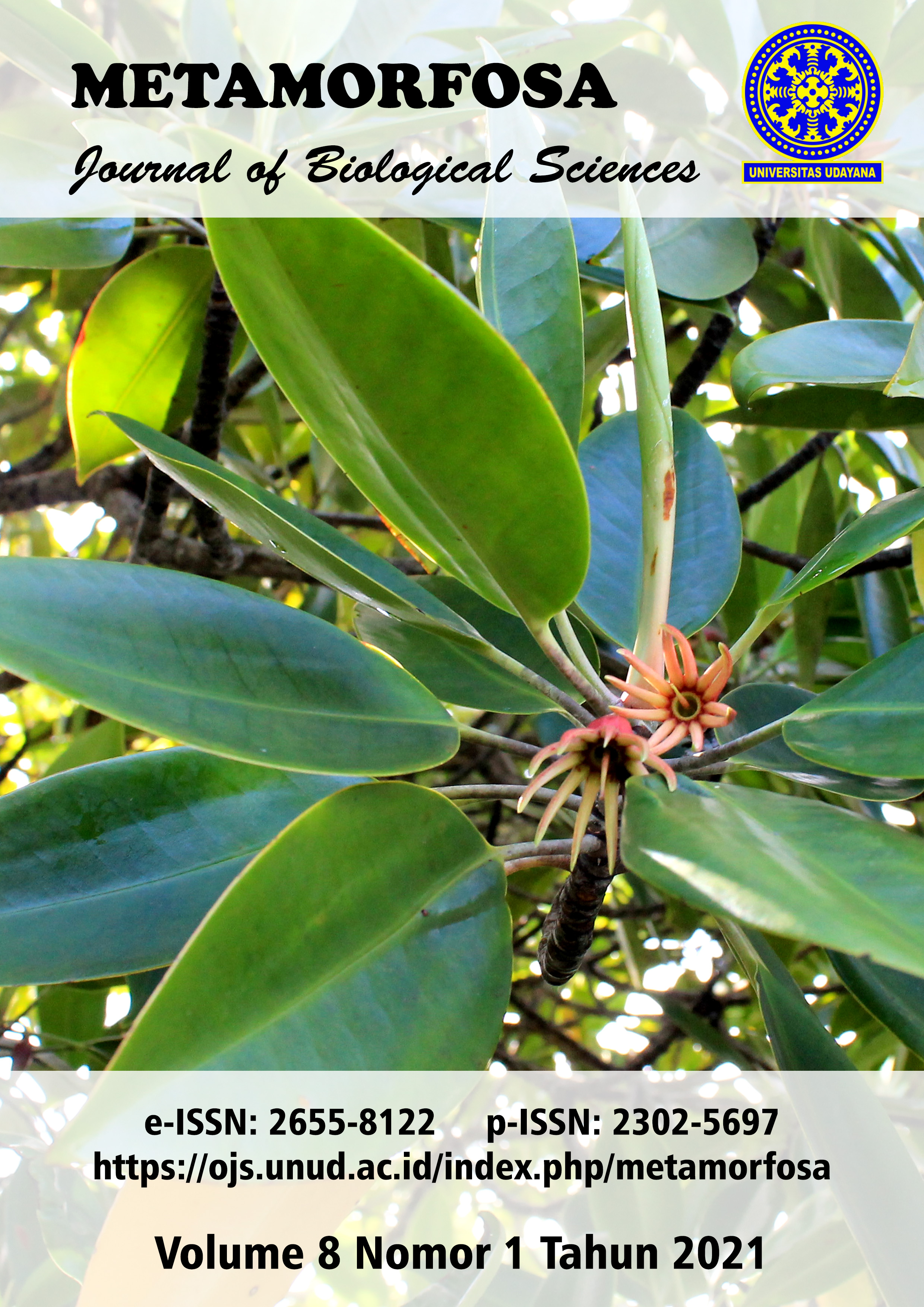Composition, Vegetation Structure, and Carbon Absorption Potential of Mangrove Forests in Ngurah Rai Forest Park, Denpasar
Abstract
The existence of development can change the composition, vegetation structure of mangrove forest. The development can also reduce the absorption of carbon gas in mangrove forests. This study aims to: (1) determine the composition, structure of mangrove vegetation in the area of ??mangrove forests of Ngurah Rai Denpasar forest park, (2) determine the condition of biomass and the potential of mangrove carbon reserves in Tahura Ngurah Rai Denpasar. This research was conducted using the Line Transect Plot method. Along the transect line plots of 10mx10m, 5mx5m and 2mx2m are made. The Purposive Sampling method was used to determine the carbon absorption in the study. Potential analysis of carbon biomass deposits is carried out based on allometric numbers. The percentage analysis of the CO2 absorption is done based on the results of analytical laboratory test. From the analysis of vegetation there are 8 types of mangroves. The highest of important value index in Station I is Rhizopora apiculata with a value of 128.10%, while the highest value in Station II is Rhizopora mucronata with a value of 130.83% and the highest value in Station III is Rhizopora apiculata with a value of 199.99%. The highest sapling level of INP was Rhizopora mucronata 171.70%, Station II Rhizopora mucronata 205.85%, Station III Rhizopora apiculata 164.57%. Seedling rate of Rhizopora mucronata in station I was 233.33%, station II Rhizopora mucronata 134.72%, station III Rhizopora apiculata 80.28%. The greatest aboveground biomass is found in station II with 325,848 tons / ha, the highest carbon stock is found in station III with 325,296 tons / ha and the highest of carbon absorptions potential is found in station III with 1,193.80 ppm.
Keywords : Mangrove forest, Tahura Ngurah Rai, Composition, Vegetation Structure, Carbon Absorption





